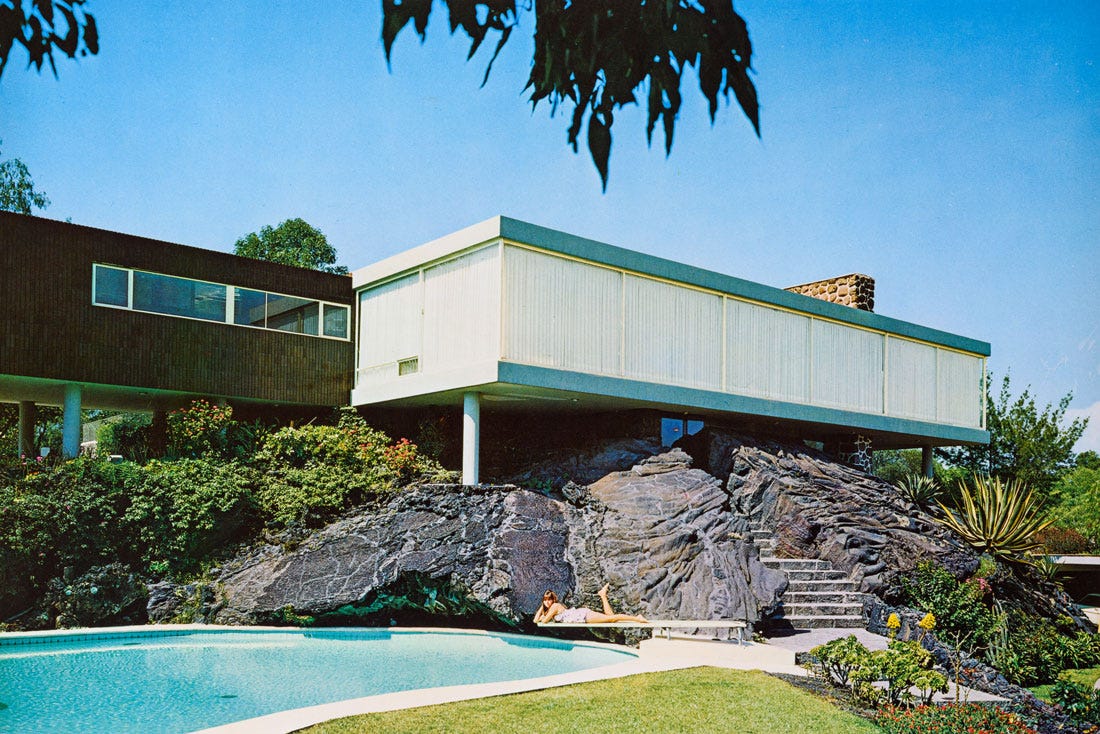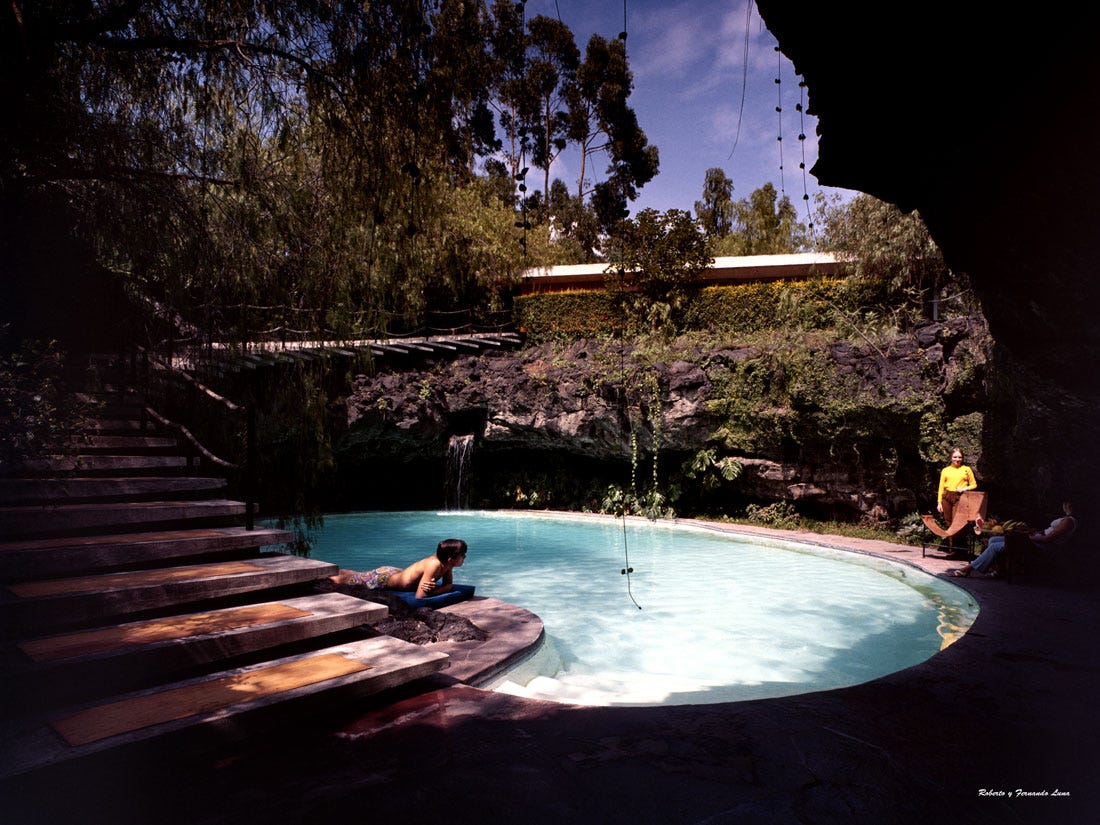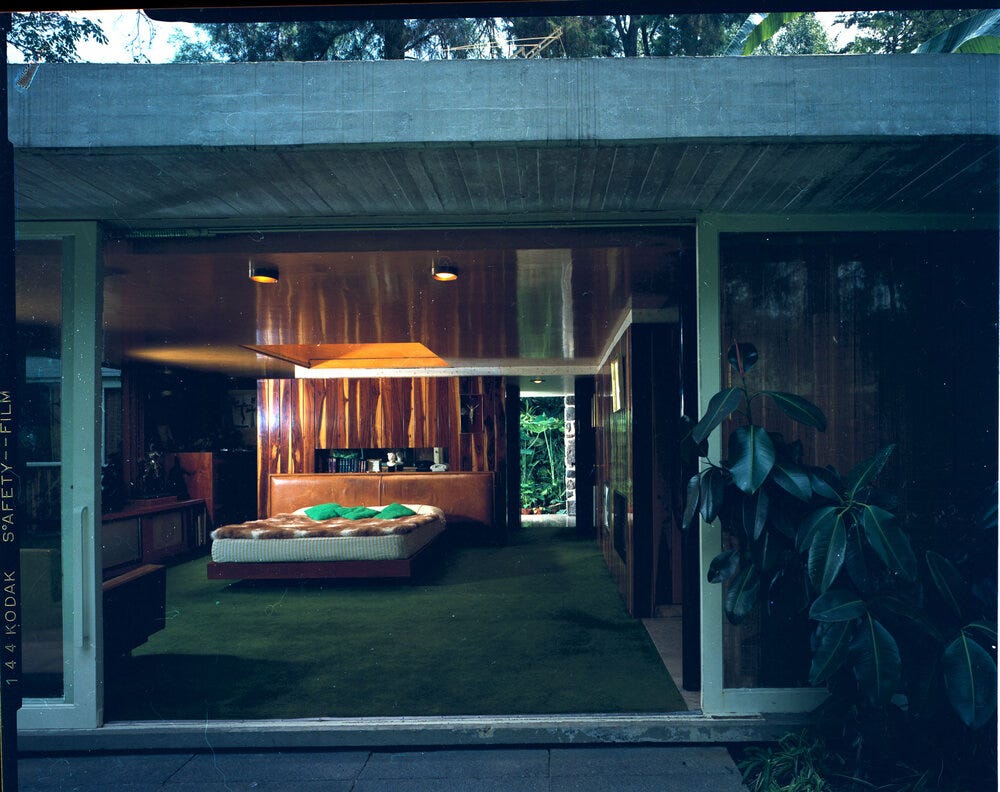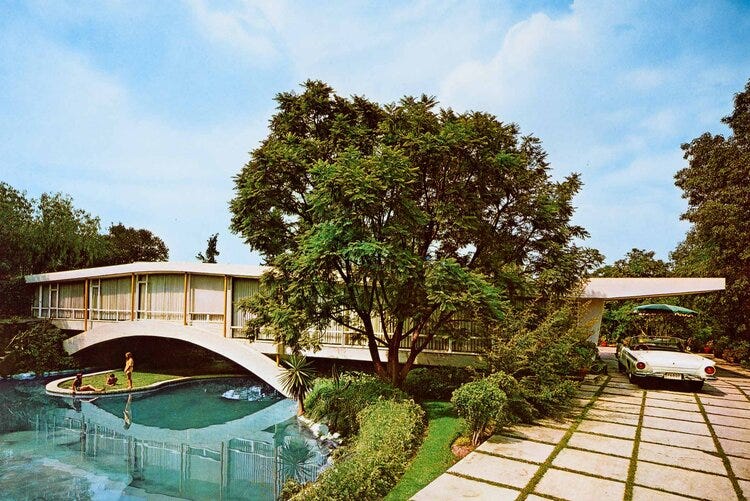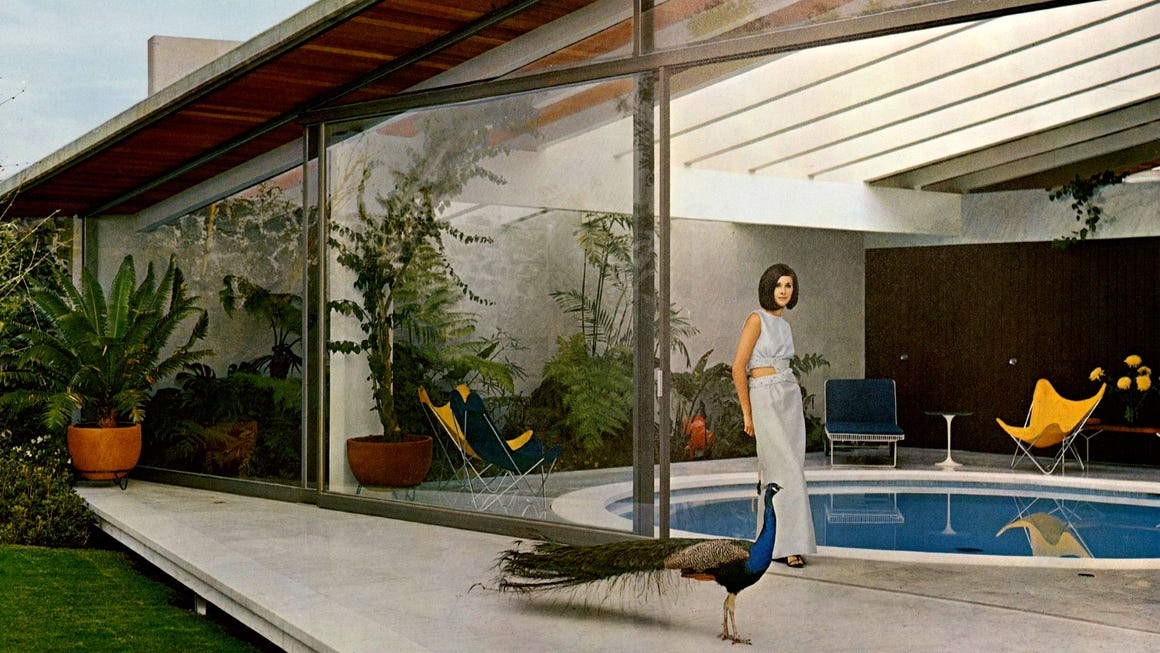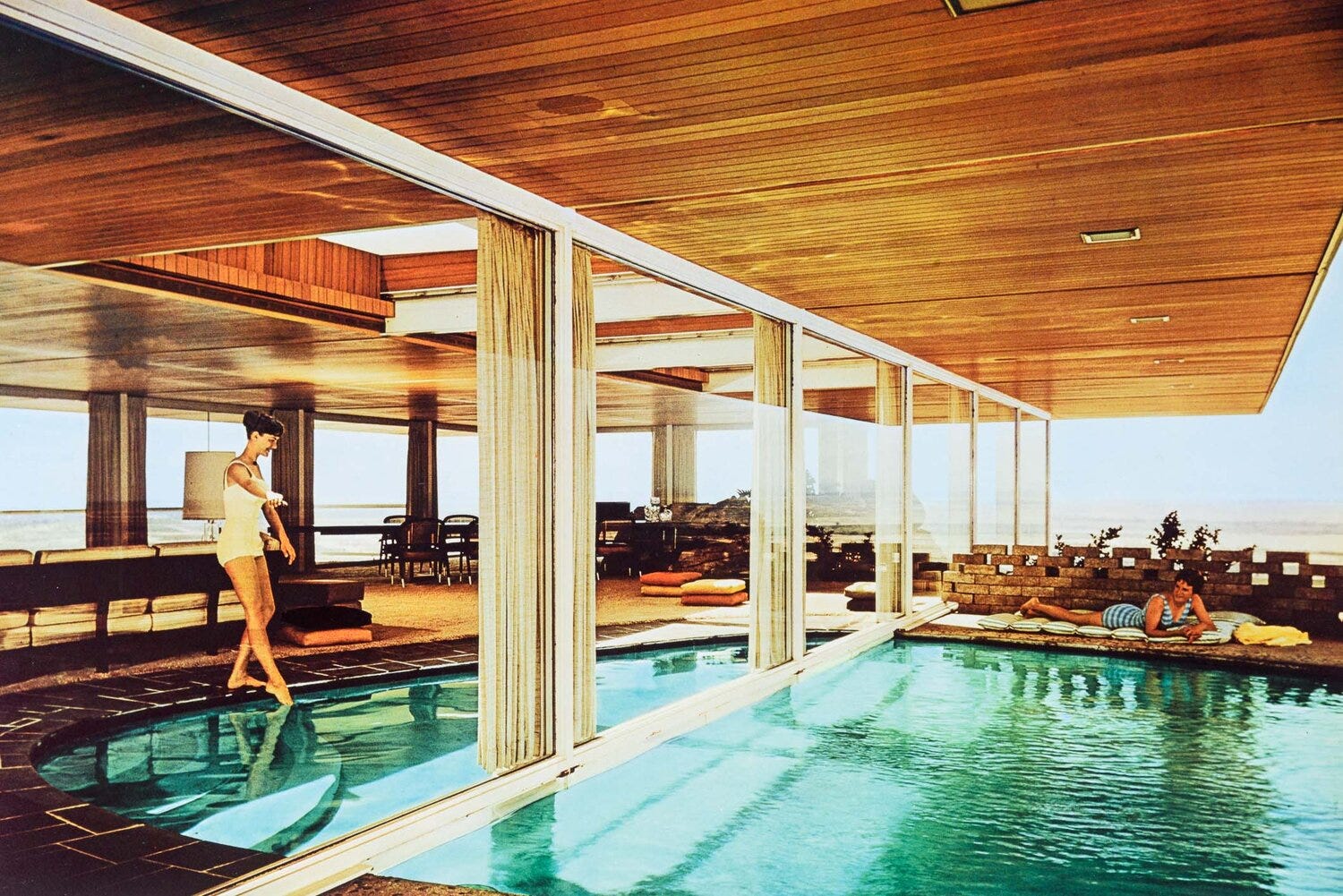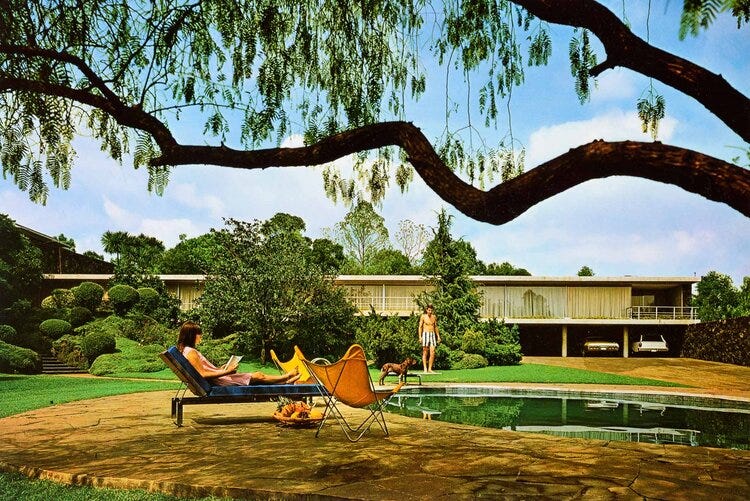The Pedregal, or Jardines del Pedregal has been a very well-to-do neighborhood in southern Mexico City, a part of the larger neighborhood called Coyoacan. It was a lava field, an inspiration to artists but little else until property became more valuable after the Second World War.
In 1945, the artist Diego Rivera published a paper suggesting that a subdivision be built there in harmony with the wild landscape. Noted architects Max Cetto and Luis Barragan had built display houses by 1948, but nothing was much taking off.
In 1950, Barragan asked a somewhat minor, architecturally self-educated Mexican architect, Francisco Artigas to construct a sales office that would also serve to show how stylish the neighborhood would be. In 1951, Artigas finished his sales office, and sales began to come.
Pedregal Sales Office, Photo Roberto and Fernando Luna
The style of the sales office was vaguely post-war, international style. The style is maybe best exemplified by Mies Van Der Rohe. Artigas was certainly a natural at it but built in other styles as well.
In more rural areas, Artigas built Baroque homes for the country wealthy. He also built commercial buildings and schools. But the homes he built in Pedregal we international to kind of California Case Study; think Richard Neutra. Artigas wound up designing a few California homes. Much of how he learned architecture was by reading and studying the work of architects such as Neutra, Rudolf Schindler, Charles Eames, and Raphael Soriano.
The home he designed for Dr. Frederico Gomez quickly became a symbol of the development and a symbol of Mexican achievement or aspiration overall.
1952, Casa Fredrico Gomez. Photo by Roberto and Fernando Luna
Over and over in Artigas’ homes, we see the integration of the lava into not just the foundation, but the home itself. This was 'de rigueur for the era, for example, down in Rio, Oscar Niemeyer’s Dos Canoas home integrated the landscape’s boulders into and through the home in 1951.
Maybe the first to do it was Frank Lloyd Wright, who said, “No house should ever be on a hill or on anything. It should be of the hill. Belonging to it. Hill and house should live together each the happier for the other.”
Artigas certainly agreed.
Casa Bustamante, 1955, photo Diego and Fernando Luna
Casa Bustamante, 1955, photo Diego and Fernando Luna
Architect Manuel González Rúl in 1960 said, "Artigas has known how to combine the stony setting with the project in a unique way, conditioning it to the natural accidents of the land on which it is built, respecting the nature that surrounds it as much as possible and achieving with the use of basic materials such as the apparent concrete of the slabs and the glass of the windows, the transparent elegance that is the consequence of maximum simplicity in the use of materials”…
Artigas’ own home-studio was not in Pedregal but about a mile north in San Angel.
Photos by Diego and Ricardo Luna, 1952
Artigas wound up building over fifty homes in the Pedregal. But with time, the style changed and he struggled to find the same success.
To cement himself as an important architect, he published a book of his work in both English and Spanish, two thousand copies each. He struggled to find a respected voice to write a forward for it.
The book didn’t really work the way he wanted. His architecture was seen as too similar to what was being done in the US. Architecture fans became enthralled with Louis Barragan, whose emotional architecture was thought to be more “Mexican”. He was seen as having been a forefather of Critical Regionalism, which found importance in architecture being of and relating to its culture. Barragan had an exhibition at the MOMA in 1976 and won the Pritzker Prize in 1980, his home wound up a UNESCO World Heritage Site.
Artigas was viewed as International Style and, by 1980, that was out of style.
By the early 2000’s most of his homes in the Pedregal had been demolished to build multi-unit apartments. But we still have his work saved in his words and the lovely photos of his friends Diego and Fernando Luna from his 1972 book “Francisco Artigas”.
Chavez Peon House 1952
Luis Echeverría Residence, 1966
Casa Fernández, 1958
It is generally overlooked that his architecture, and Mexican Modernism generally of that era, was in its way, culturally Mexican. The post-war economic boom happened in Mexico as well and created the “Mexican Dream” era of the 50’s and 60’s. This was the architecture of that dream. The dream was to have comfort and wealth like the US and maybe respect internationally along with it.
By the way, if you are interested in finding a copy of “Francisco Artigas” they do come up for sale. The going price seems to be about $1700. I do have a birthday coming up!




